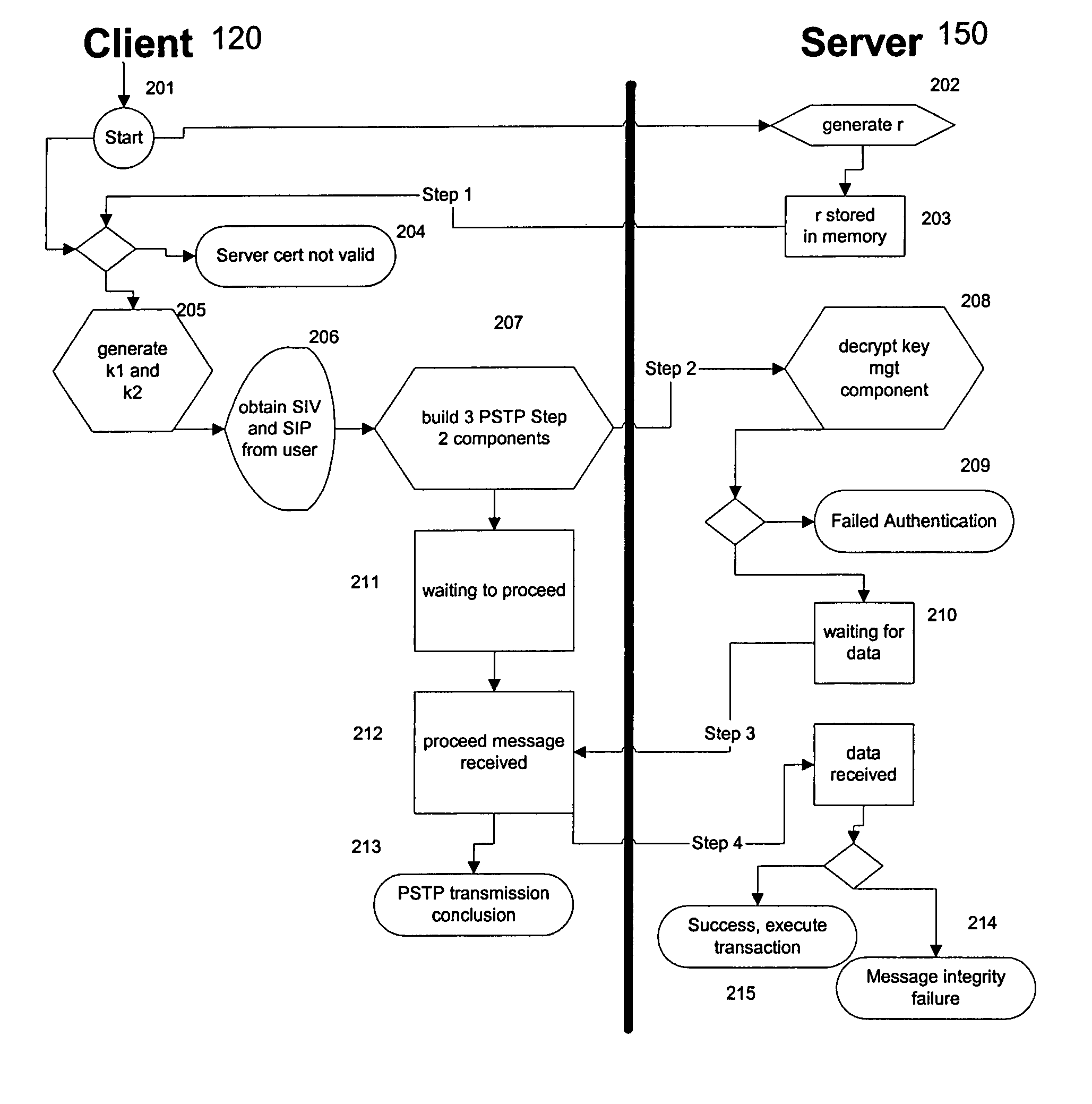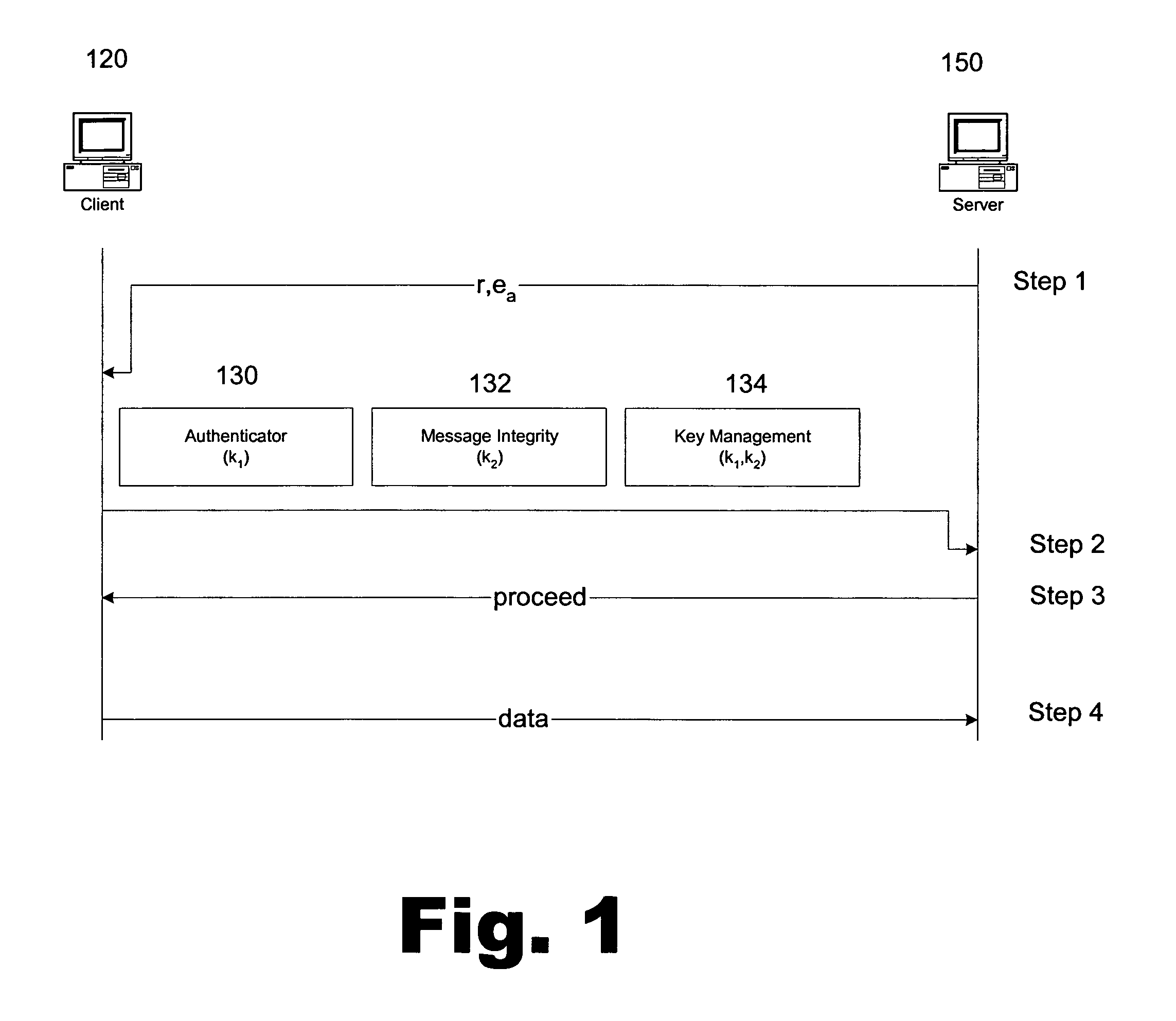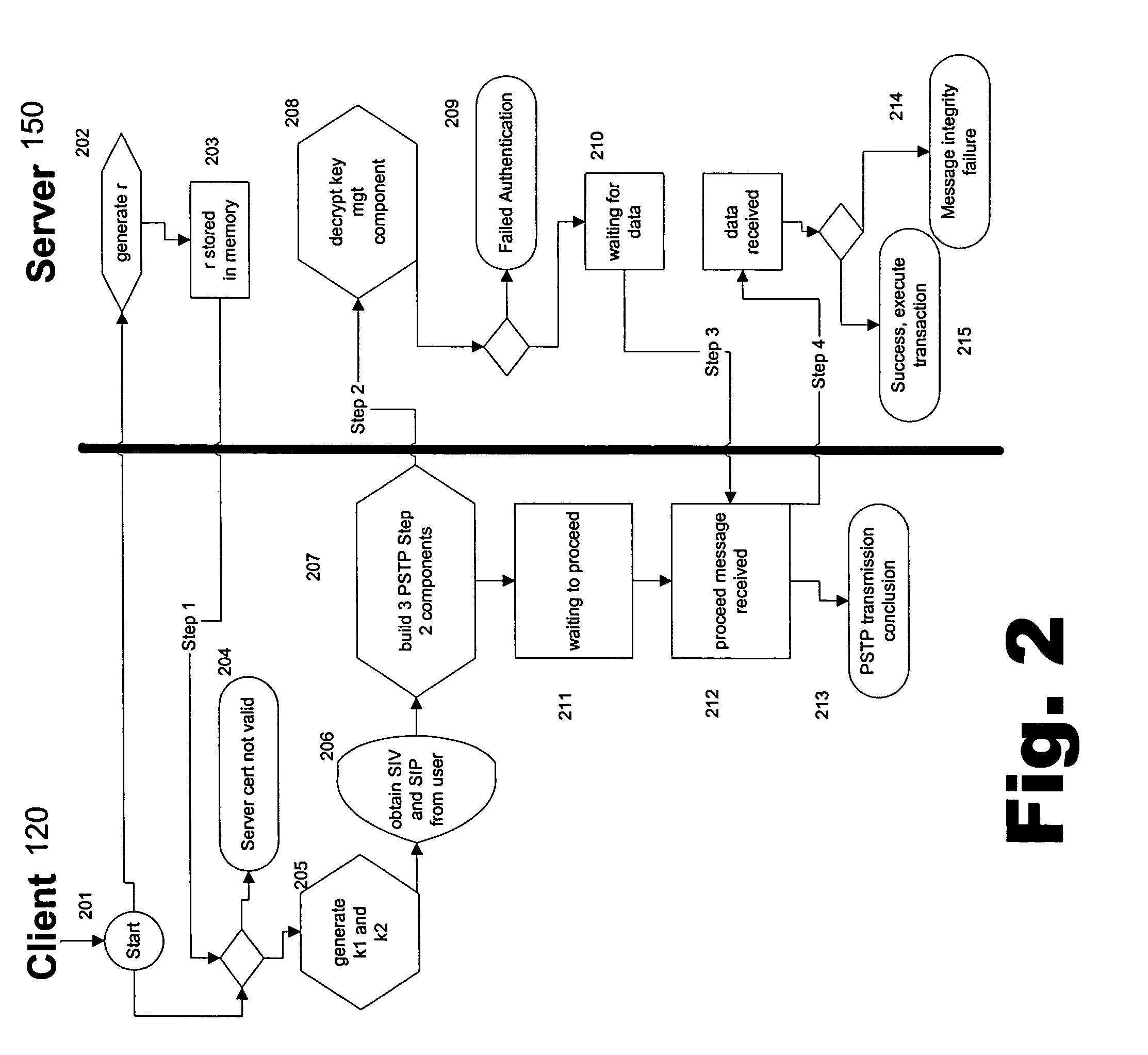Portable security transaction protocol
a security transaction and portability technology, applied in the field of secure computer communication systems, can solve problems such as inability to meet the needs of many applications, requiring secure storage of private keys by the originator, and affecting the security of the transaction protocol
- Summary
- Abstract
- Description
- Claims
- Application Information
AI Technical Summary
Benefits of technology
Problems solved by technology
Method used
Image
Examples
example
[0105]FIG. 5 illustrates an exemplary screen display 300 of a value-bearing transaction entry form. The screen display 300 includes a customer name box 301 for entering a user's name, an origin account box 302 for entering an originating party's account number, a destination account box 303 for entering a destination party's account number, a transaction amount box 304 for entering an amount to transfer to the destination account, a token box 305 for entering an authorization token, a password box 306 for entering a password, and a signature button 307 for digitally signing the transaction. It is to be appreciated that the screen display 300 shown in FIG. 3 is a simplified version of an actual form and is provided for illustrative purposes. Furthermore, it is to be appreciated that various other graphical user interface widgets could be used to implement this screen 300.
[0106]In operation, a user points his or her browser towards a Web-based financial application. The Web-based appl...
PUM
 Login to View More
Login to View More Abstract
Description
Claims
Application Information
 Login to View More
Login to View More - R&D
- Intellectual Property
- Life Sciences
- Materials
- Tech Scout
- Unparalleled Data Quality
- Higher Quality Content
- 60% Fewer Hallucinations
Browse by: Latest US Patents, China's latest patents, Technical Efficacy Thesaurus, Application Domain, Technology Topic, Popular Technical Reports.
© 2025 PatSnap. All rights reserved.Legal|Privacy policy|Modern Slavery Act Transparency Statement|Sitemap|About US| Contact US: help@patsnap.com



